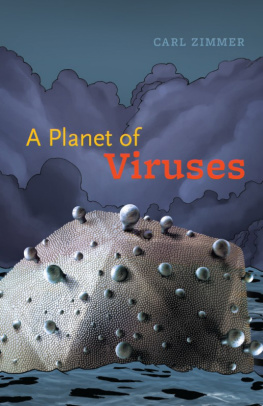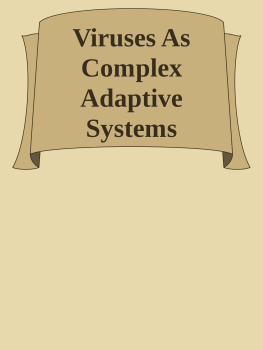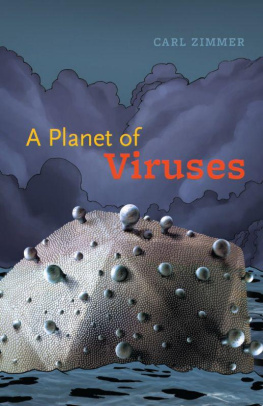Everybody who has ever owned a computer has dealt withviruses and the negative effects they create. However, due to the fact that theInternet and technology in general is evolving quicker and quicker every year,the viruses that are being created are more and more dangerous. Keeping up withtheir names only is extremely difficult, let alone learning how to avoid them.
Just like technology exploded within the last few years, sodid the viruses. There are now hundreds of types of viruses that can infiltrateyour computer through a variety of ways: by downloading something you dontwant, by copying a file or as an attachment in a folder you are downloading andmany more. You would be surprised to see how many ways they use to fulfill thepurpose for which they were created.
This book will teach you everything you need to know aboutcomputer viruses: what they are, how many types of computer viruses are outthere and most importantly, how to stop them from inflicting damage on yourcomputer. You will find out what an anti-virus is, how it functions, as well ashow to help it win in the battle with the viruses.
So, without further ado, I hope this book will help youunderstand the nature of viruses better and how to help your computer byyourself without feeling forced to call an expert.
Chapter I: What Are Computer Viruses?
If you were to ask somebody what a computer virus is, theyprobably wouldnt know what to answer to you. There is a reason for that: theycome in such high numbers and can be classified in so many differentcategories, that giving a definition that would encompass all of them is trickyat first.
Microsoft, one of the leading companies in the computerindustry, defines computer viruses as it follows:
Computer viruses are small software programs that aredesigned to spread from one computer to another and to interfere with computeroperation.
This definition is rather broad, because it containseverything from small viruses that duplicate your files and are just a mereannoyance to the dangerous ones that put a lock on your files and refuse togive you access to them until you pay a certain amount of money to its creator.
However, it also describes the basic idea that all virusesstart from: that they are small software programs created for the sole purposeof messing up with the normal computer operation. Whether we are talking aboutviruses that simply piss you off by delaying your work on the computer or aboutones that have been designed to purposefully stop you from working doesntmatter, because the core idea is the same.
Most of the time, viruses are created in order to stealinformation. They infiltrate your computer and then they start to steal yourinformation in order to send it back to their creator. Have you heard about thehacker that stole nude photos from the celebrities phones? Yes, he used avirus in order to do that. Another very damaging thing they can do is stealyour credit card info or worse.
Besides stealing information, computer viruses oftentimes:
- delete information off of your computer;
- corrupt files and make your computer act wonky and weird;
- use your e-mail address to spread itself to other users,without you knowing it;
- take your files hostage until you pay a certain amount ofmoney to the creator of the virus in order to release them.
In short:
Computer viruses are small software programs created formalicious purposes that involve stealing information. They can easily hidethemselves into small files such as images and attachments and infect yourcomputer, after which they can multiply and send themselves as attachments usingyour e-mail address to other people in your list.
The damages each virus can do to your computer variesaccording to the category it fits in. While some may corrupt your files,multiply them or delete them, others go as far as deleting everything from yourhard disk or taking your data hostage until you pay a certain fee.
We will cover the types of computer viruses in the followingchapter.
Chapter II
Types of computer viruses
As I mentioned in the previous chapter, there are numeroustypes of computer viruses out there, particularly due to the fact that theychange very fast and new ones are developed every day in order to keep up withthe technology that continues to develop more and more. However, there are somebroad categories that we can discuss here. Each category contains severalviruses that have several things in common (usually the way they affect thecomputer, where they reside and their origins).
Here are some of the most popular ones:
1. Resident viruses
About: Resident viruses are small software programsthat try to stop your computer from performing its usual operations.
Where it hides: In the RAM memory, which makes itquite difficult to detect and eliminate.
What it does: Its main task is to stop the usualoperations of the computer and corrupt various files that have been opened,copied, renamed or closed lately.
2. Overwrite viruses
About: As the name suggests, the overwrite virusescategory contains viruses whose only task is to infect files and delete theircontents. After being attacked by such a virus, the files are basicallyuseless.
Where it hides: Everywhere.
What it does: The virus will try to gain access toyour files, after which it will delete their content. This makes the filecompletely useless. You cannot recover its contents; you will be forced todelete the file.
3. Direct action viruses
About: These are some of the most dangerous virusesout there because they know how to replicate and how to multiply to multipledevices and when it is executed, it will do whatever it was programmed to do.You could have such a virus in your computer and not know it.
Where it hides: In the hard drives root folder.
What it does: This virus spreads itself like fire through various waysuntil it infected numerous files and folders. Once it is executed, it starts todamage the operations of the computer. Since it is already widespread, itsvery difficult to stop at this point.
4. File infectors
About: This is the category that contains the mostviruses because this is usually what viruses do: they target running programs,after which they infect them and damage them.
Where it hides: In folders and files.
What it does: The virus attaches itself to a certain file or it createsa copy of a .jpg or a .doc file, except it has the .exe extension. Every timethe user mistakes the .exe file for the original .jpg or .doc file, the viruswill be executed and will damage the computer more and more.
5. Boot viruses
About: As the name suggests, in this category we haveviruses that boot the computer.
Where it hides: In the computers hard disk or floppy drive.
What it does: The viruses that fit in this category usually make thecomputer unable to boot. However, you can avoid that by being careful what harddisk you are using within your computer.
6. Directory viruses
About: This type of viruses is very hard to detectbecause of the way it functions: by hiding itself and changing the path of afiles location.
Where it hides: In the programs it infects.
What it does: As stated above, this type of virus attaches itself to afile and changes its location. Because it attaches itself to the said file,its impossible to see when or where it changed the files location to.
7. Browser Hijack viruses
About: This virus messes with the browser settings. It hides into freepackages such as free wallpapers that have to be downloaded and installed andafter it reaches the computer, it will start to change all the original settingsof the browser, making it extremely difficult to get back to the initialsettings. It is also one of the most popular viruses of 2014 2015.










